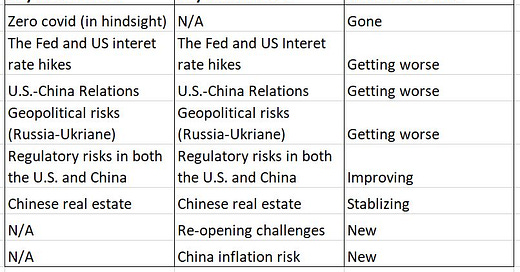Re-assessing China Risks (Part One)
Zero covid risk is gone, but what about the rest?
I am Qi Wang, CEO of MegaTrust Investment (HK), a boutique China fund manager based in Shanghai and Hong Kong. Total 25 years of experience in Chinese and global equities. This is my blog for MegaTrust clients and professional investors.
While it’s good that the zero covid policy is over, most of the China risks from last year continue into 2023, with no…
Keep reading with a 7-day free trial
Subscribe to Daily Reflection on China to keep reading this post and get 7 days of free access to the full post archives.



